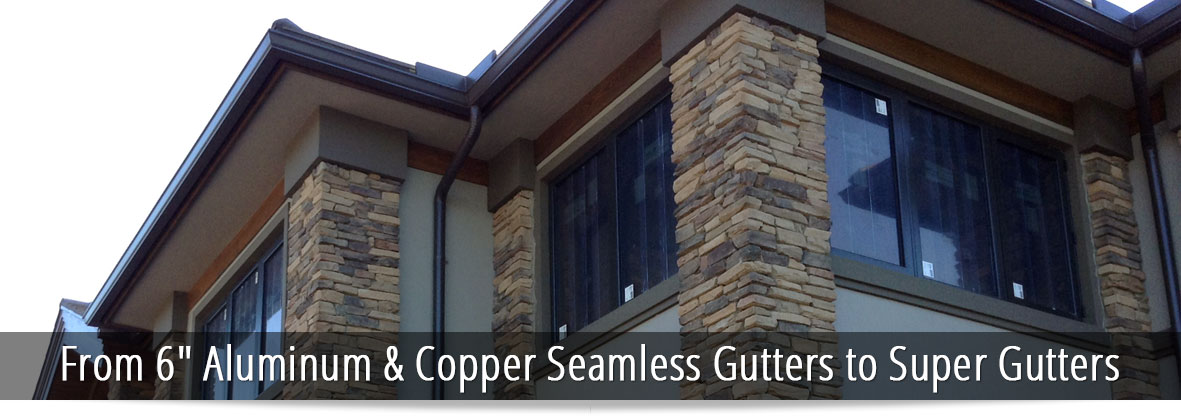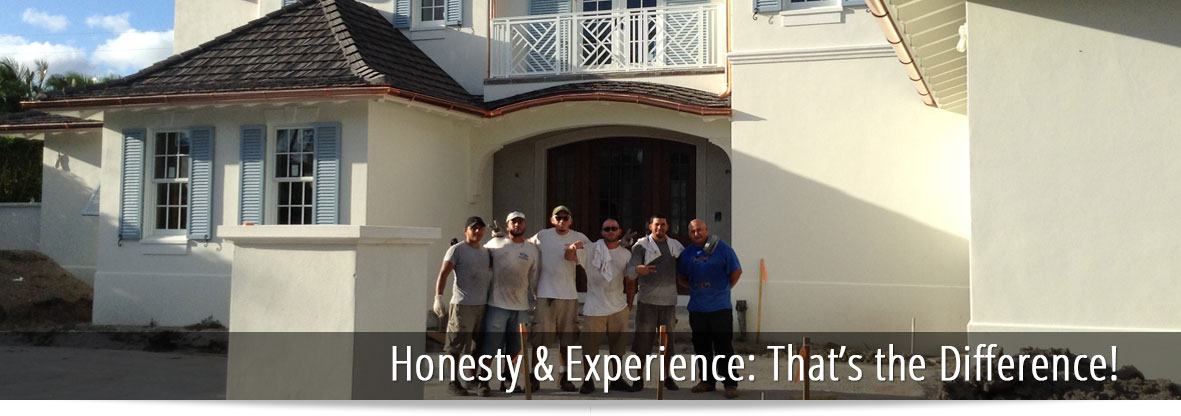Gutters Glossary
Glossary of Seamless Gutter Terms
Here are some terms & subjects you should be aware of when reading an estimate from a contractor when making decisions.
Gauge - The thickness or the gauge of the gutter is very important. Primary aluminum is the thickest and most consistent available. The gauges range from .027-in, to .032in, the most used thickness is .027 in. for 6” gutters and .032 for 7” gutters.
Run Length - A straight section of gutter mounted against the fascia board. It is measured in linear feet.
- A Gabled Roof has 2 runs, front and rear.
- A Hip Roof has 4 runs.
- Fascia Board - The flat horizontal surface right below the edge of a roof
- Linear feet (often called Lineal feet) - A linear foot is the same as regular feet. It is a one-foot length of any long, narrow object. No conversion is necessary. If something is 6 linear feet tall, it is 6 feet tall. That just means when measuring linear feet, contractors are not taking the width into account. If you bought 100 linear feet of gutter, laying them down end to end would stretch for 100 feet, it wouldn’t matter how wide the gutters were.
Run Height - The height (in stories) at which each gutter run will be located (1st story, 2nd story etc.). This is used to determine the length of downspout needed.
Downspout - A pipe that carries rainwater from a roof gutter down to a drain or to the ground.
Fascia Angle - If there is any fascia board that is angled to follow the roof rafters, there is usually an extra charge.
Fascia Replacement - New gutters need a solid fascia surface upon which to be mounted. The rotted boards need to be replaced. Fascia boards narrower than 3” in width must be built out to provide proper support for hanging your new gutters.
Colors - Choose colors that will blend with your house. The gutters and downspouts are available in a number of different colors. The price varies depending on the color you choose.
INSTALLATION PROCESS
Seamless Gutter Machine - South Florida Gutters will arrive with a machine right on the truck. The coil of metal in the color you have chosen is rolled through the forming machine to create a continuous piece of gutter that is custom sized to your home.
Attaching the Gutters
Spike and Ferrule - A metal cylinder or tube is placed inside the gutter to strengthen it and keep it from bending. The spike is driven through the face of the gutter at the top, through the ferrule and into the wood fascia board.
Hangers or Hidden Bracket - These brackets (sometime called eave hooks) interlock into the gutter and are then attached to the roof under the shingles. This option offers a cleaner look and is usually a little more expensive.
Sealing and Adding Corners
The crew will work their way around the house, fabricating, installing and sealing each length of gutter and each inside or outside corner as they go.
Mitres (Corners) - South Florida Gutters fabricate the corners on site using the same material as the rest of the house, the advantage is that there is one seam instead of 3 and it’s a cleaner look overall.
Adding Downspouts
The last step is the determining the location and number of downspouts needed and then installing them in the best location for directing the water away from the house. For every 1200 square ft. of roofing area it will require a 3 x 4 downspout. For example: If your roof is 4Oft. long and 1 6ft. to the peak (40 x 16 =640 square ft. area). Requires (1) 3x4 downspout. The estimate should include the price of the downspouts. Be sure to ask how many there will be before starting the job.







